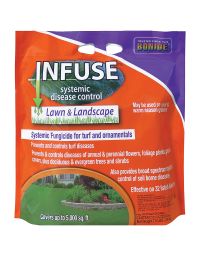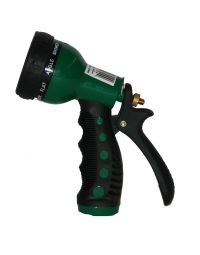The Dog Days of summer can make your luscious lawn look less than healthy and likely showing signs of stress.
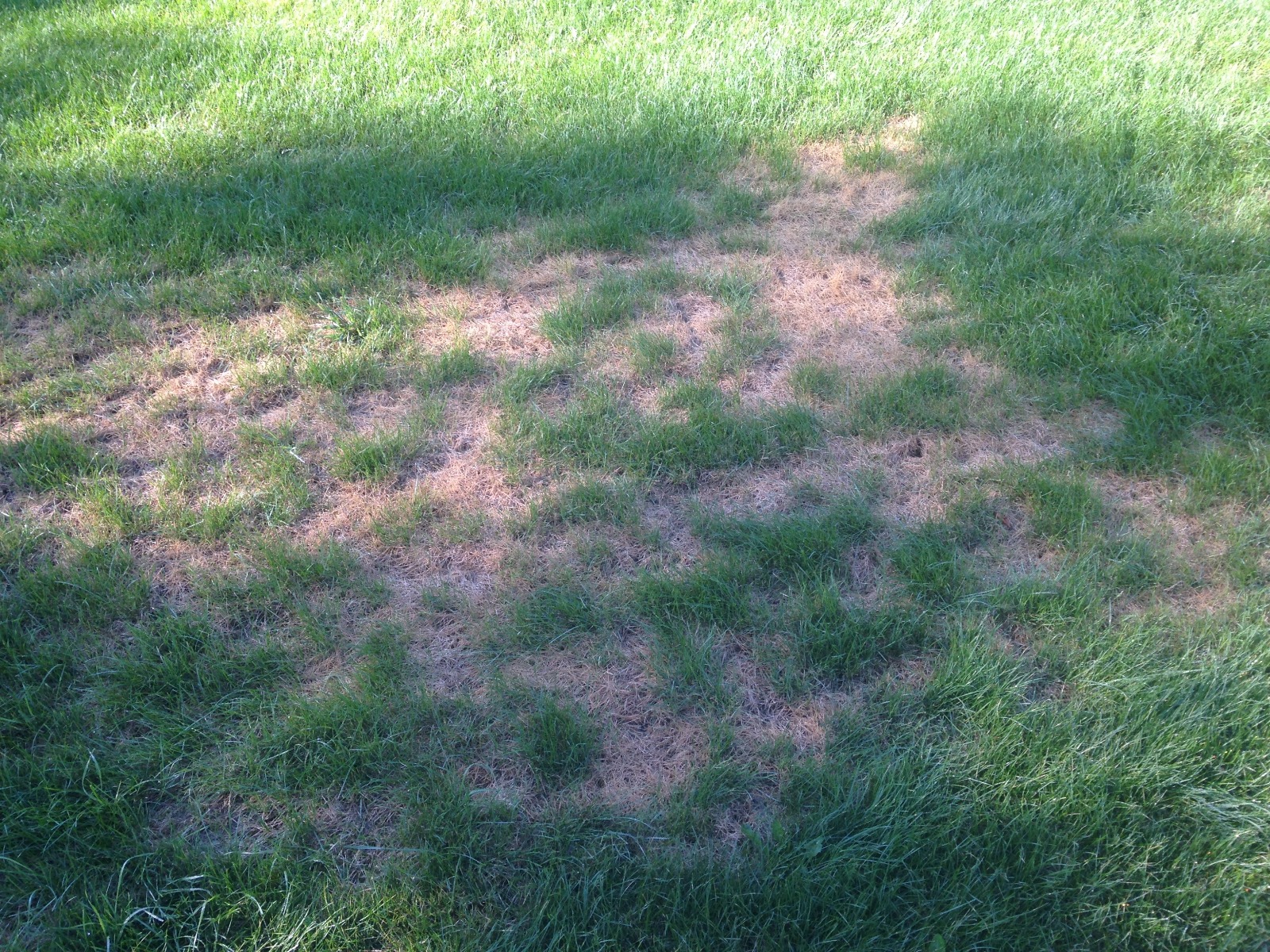
Heat stress on a Lawn
Water
- One inch of water per week keeps turf grass healthy.
- Water less frequently but for a longer period of time. This will promote deeper roots, greater drought tolerance and less maintenance.
- Water your lawn in the morning when it is cool to allow more water to soak into the ground rather than evaporate.
- Avoid watering in the evening to prevent fungus and disease.
- Make sure you have functional and easy to use watering equipment to make the process fool-proof.
- Once you start to water don't stop.
Fertilization
- Apply Gerten's Turf Special on a cool morning in the summer. Our Turf Special is a slow-release fertilizer that provides prolonged feeding with minimal danger of burning heat-stressed turf. It contains 26% Nitrogen to increase vigor and promote a lush lawn and 10% Potassium to strengthen roots.
- Sustane is an excellent alternative for those preferring an organic turf fertilizer. Locally produced, Sustane's All Natural Lawn Food provides 8% slow-release Nitrogen, 2% Phosphates and 4% Potassium from biologically stable compost, natural potash and feather meal.
Keep the Grass Longer in Summer
Grass has a crown from which new growth emerges. If you keep the lawn longer in the summer, the blades shade the crown and protect it from burning. The University of Minnesota Extension recommends:
- Keeping your lawn at 3 inches during hot weather.
- Don’t take off more than 1/3 of the height at a time.
- Keep your blades sharp so they cut the grass not shred it.
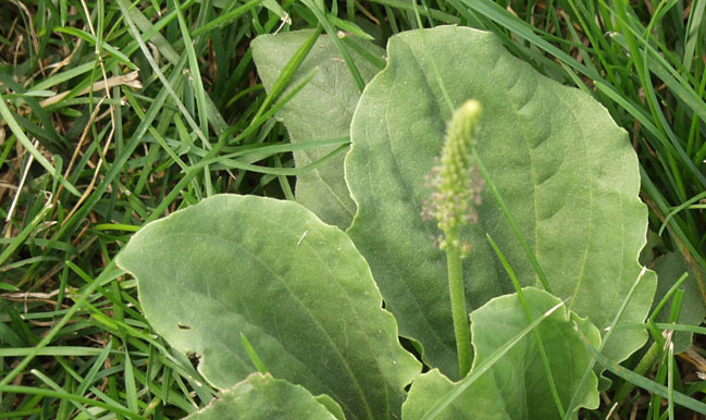
Plaintain broadleaf weed
Weeds/Crabgrass
Weed Out for broadleaf weeds and crabgrass is an effective solution if you have crabgrass this time of year. It kills crabgrass to the root. Creeping Charlie is another ongoing battle this time of year. Weed Free Zone and Weed Beater Ultra are the best solutions we carry for Creeping Charlie and other broadleaf weeds.
- Do not apply liquid solutions to plants like turf grass when the air temperature is at or above 85 degrees.
- At this temperature, most plants are stressed and adding a chemical solution can worsen the condition.
- During hot spells it's best to apply in the evening when temperatures drop and the sun is low in the sky or wait until the heat breaks and cooler days arrive.
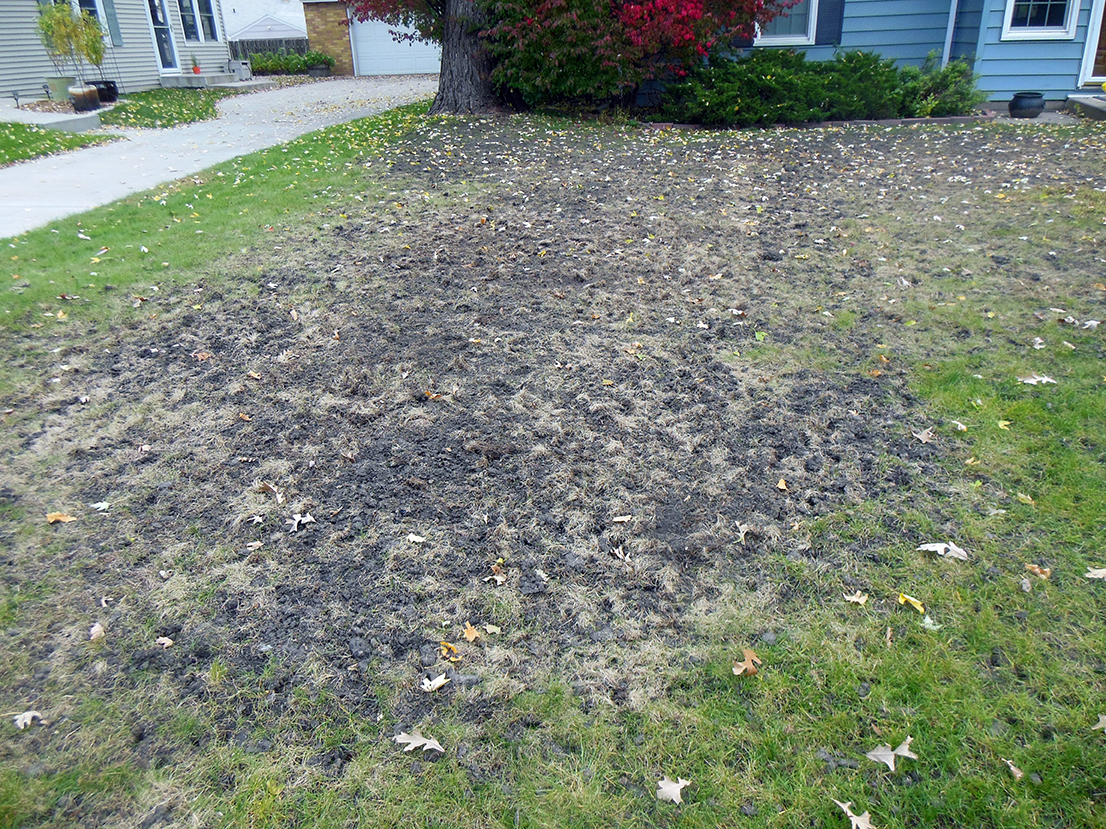
Severe Japanese Beetle grub damage photo courtesy of University of MN Ext.
Japanese Beetle Grub Damage
Japanese Beetles are a year-round problem. Young grubs feed on the roots of grass, while the adults feed on the foliage of over 300 plant species. In order to get rid of this pest, one of the worst in Minnesota, you need to guard your yard against the grubs and adults.
- Grub damage is easily identified in the yard by two characteristics. The first is a large, irregular brown patch. (this can look similar to heat stress)
- Secondly, the brown grass pulls away from the soil with little to no resistance.
- Application of a grub killer this fall and again in the spring is critical to guard your yard. Green Thumb Season-Long Grub Killer can be applied anytime during the spring, summer and fall and needs to be applied only once.
- Bayer's Grub Killer Plus works intensely for about a week and then leaves the environment. For people who prefer not to have a season-long grub killer present, Grub Killer Plus is a fantastic alternative.
Lawn Disease
Brown spots often appear at this point in the summer. Once the possibilities of heat stress and grub damage have been dismissed, fungal diseases are the logical culprit.
- Upon close examination of a grass blade, black or dusty gray banding will appear laterally across the blade.
- Bring a sample to the Gerten's Turf Experts and we can diagnose it for you.
- Based on what we find your prescription will likely be either Infuse or Fung-o-nil.
- Infuse is a systemic fungicide that comes in either a granular or liquid for quick and easy application.
- Fung-o-nil is a topical fungicide in a liquid form. It's widely used in the lawn and garden and is safe for edibles and well as ornamentals.
Fall Seeding
After you've treated your lawn for insect or disease problems, fertilized it and brought it back to a vibrant green, you may find some sparse or bare spots in need of seeding. Fall is the best time to seed your lawn.
- Gertens has seed for any condition your lawn requires: Sun or shade, heavy to sandy soils, high traffic, low maintenance, anything.
- Protect newly sprouted grass with a thin laying of mulching straw. One or two bales will cover 1,000 sq. ft. Remove it three weeks after germination.
- A layer of grass clippings kept on the lawn retains soil moisture and fertilizes the grass.
- Don't leave too much or you will have problems with excessive thatch.
- Mulching lawns with clippings works best if the grass has been mowed regularly and not allowed to grow too long.
- Clippings that are wet or long tend to become soggy clumps that eventually smother the grass beneath them and can cause disease.
Cool season grasses:
Cool season grasses grow in the spring and fall when soil temperatures are 50 to 65 degrees F and the air temperature is 60 to 75 degrees F. They include:
- Kentucky bluegrass
- Bentgrass
- Ryegrass
- Fescues
Come high summer, they usually go dormant unless they are watered regularly.
Warm-season grasses:
Warm-season grasses grow best when soil temperatures are between 70 to 90 degrees F and the air temperature is between 80 to 95 degrees F. They include:
- Bermuda
- Augustine
- Zoysia
They go dormant when the weather gets cooler.
Note: In our northern climate, your choice depends on when you want your grass to look its best. If you don’t care if your lawn takes longer to get started in the spring, but will stay green through the summer, go for a warm-season grass. Grass hardiness varies with the type, so consider all of these factors when choosing grass seed.
The experts at Gertens are always available to answer your questions!


